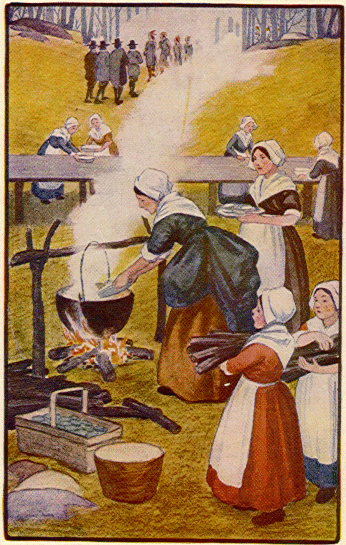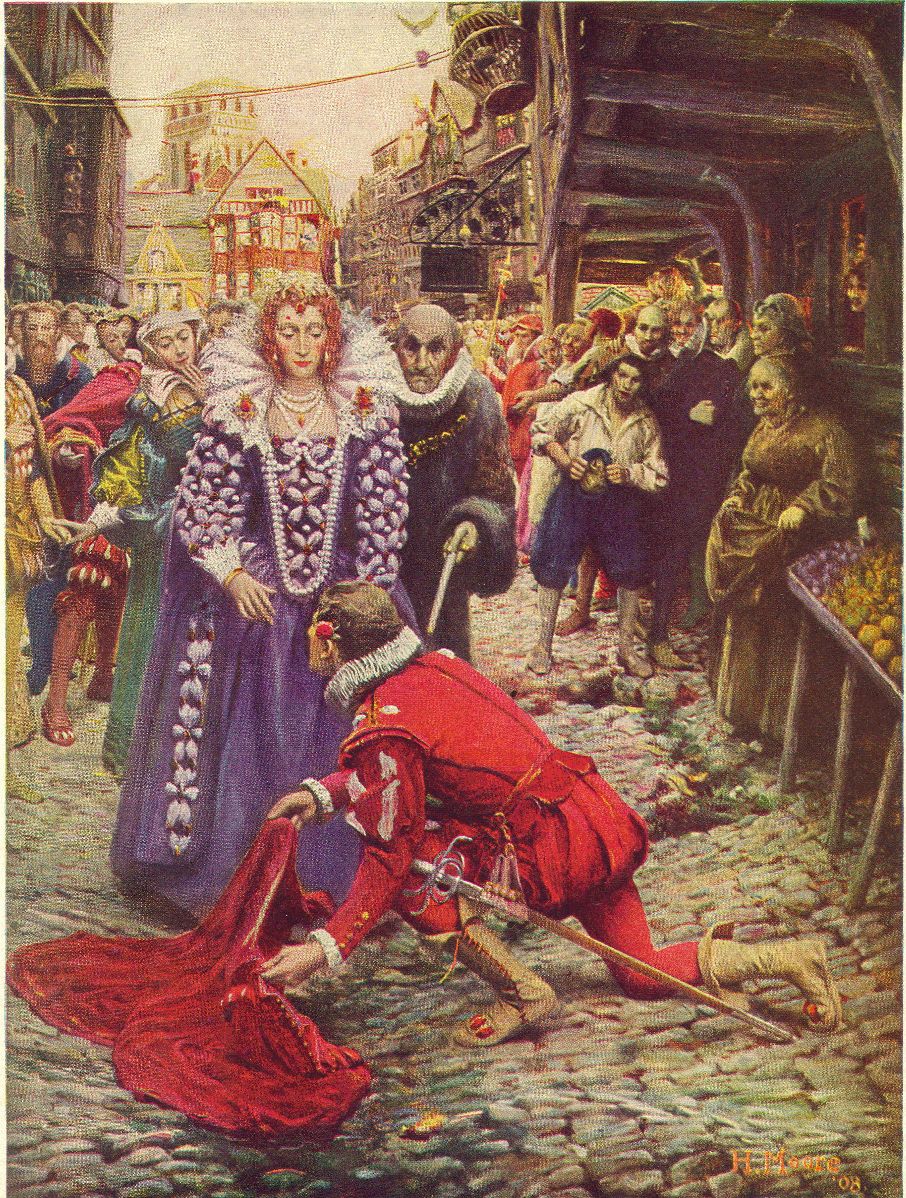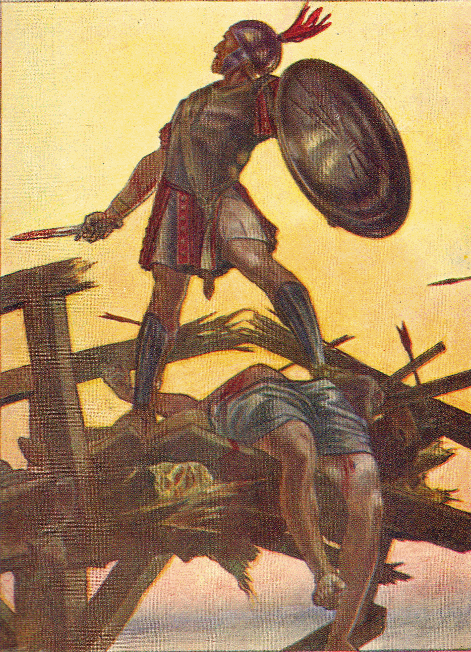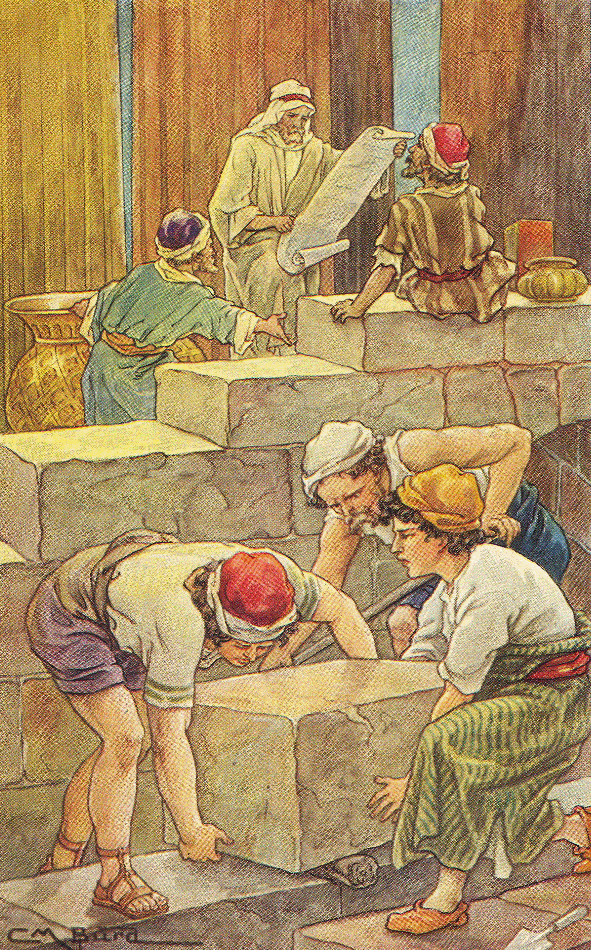Young Readers
Overview of Western Civilization
Young Readers Teacher's Guide—Printable Version
The Young Readers Classical Curriculum was created to provide a broad overview of
the great characters, events, and literature of Western Civilization to grammar school
students. It includes many of the shortest and easiest to read selections from
all of Heritage History’s libraries.
Because the Young Readers Curriculum is intended as a survey rather than an in
depth study, the Historical Divisions that we have defined for it are extremely
broad. In most of the other Heritage curriculums, the subject civilization is
divided into narrowly focused historical eras, and each division is considered
in depth. The Historical Divisions of the Young Readers Curriculum, however,
provide only a rough overview, appropriate for novice students who are wholey
unfamiliar with world history. Furthermore, they are
presented in reverse-chronological order, with the most recent civilization of
concern—that is American—presented first, and the oldest civilizations last.
The historical divisions of the Young Readers library are:
These divisions are intended to provide a framework for understanding
how the books included in the Young Readers library fit into the broad panorama
of Western Civilization. A brief introduction to these historical eras follows.
Short descriptions of a few famous characters and events from each era that
are likely to have children’s stories associated with them are provided on
other pages. By the time a student has read a few of the recommended books
from each category, he should have been introduced to many of the famous
characters and incidents from these lists.
American History
The American History division of the Young Readers collection focuses mainly on
the early history of the United States, but also includes stories of discovery
of the New World that were undertaken by Spanish and French explorers.

There are many stories of American history that are of terrific interest to
students, but the ones most appealing to young readers are those of explorers,
inventors, pioneers, and military heroes rather than statesmen. In most cases,
the lives of the Founding Fathers are introduced to young students through
personal anecdotes that emphasize character rather than a discussion of their
role in government.
It is important to introduce the idea of a constitution and bill of rights to
younger students, but they are unlikely to understand their significance until
they have studied much more history. We recommend emphasizing American
liberties and the right of electing leaders, but leaving a discussion of the
American form of government to older students.
American history will likely be of great interest to young students because it
is their own country. It should be pointed out, however, that the entire course
of American history takes place in only a few hundred years—whereas the recorded
history of some Ancient and European civilizations lasted over a thousand years.
America also has a relatively peaceful and prosperous history, with few wars,
famines, plagues, or military coups. This gives United States history more of an
optimistic character than histories of other periods, which also makes it
attractive to younger students.
The Heritage Classical Curriculum, because it draws on history books written
prior to 1923, only deals with American History until the close of World War I.
This is, however, a suitable break point, since the progressive, secular,
liberalism that transformed the American system into our modern government did
not gain a substantial foothold until the early twentieth century.
Virtually all of the American histories included in the Heritage collection were
written from a traditional, patriotic viewpoint that celebrated American
freedoms and individualism. This "simplistic" viewpoint, whatever its flaws, is
at least comprehensible and attractive to young students and holds their
interest in American history, whereas more "critical" modern accounts tend to
bore and repel novice readers.
European History
The European History division of the Young Readers Curriculum includes dozens of
stories from European history ranging in time from the fall of the Roman Empire
to the First World War. Since European history is such a large topic and since
the fates of various nations of Europe diverge significantly, the Heritage
Classical Curriculum breaks the History of Europe into five different divisions:
British Middle Ages, British Empire, Spanish Empire, Christian Europe, and
Modern Europe. All of these divisions are grouped together in the Young Readers
collection for the sake of simplicity.

European history is the most complex of the three major divisions covered in the
Young Readers collection and most topics related to recent history are best left
until high school. The European middle ages, with its monasteries, knights and
chivalry, crusades, guilds, exploration, art, and architecture are easy enough
to romanticize in such a way that they are of interest to very young students.
It is more difficult to simplify modern themes, such as the reformation, the
enlightenment, colonialism, and rise of secular democracies in such a way that
they are perceptible to younger students. The most effective way to introduce
them is simply to expose students to stories about the major characters of the
age, and if appropriate, encourage them to identify the era. Just being able to
recognized events, characters, and eras is plenty for younger students, who are
not old enough to comprehend the political and philosophical dimensions of
recent events.
European history is an enormously rich field for studying the impact of
Christianity on Western Civilization and the evolution of modern society. Many
important topics such as modern capitalism and world trade, republican political
systems, secularism, and technological innovation have their roots in European
culture. Such topics, however, are best left until students are old enough to
comprehend them. The object of young readers should be to become familiar with a
broad range of European characters, folklore, literature, nationalities, eras,
and events. These topics need only to be introduced at a young age—they can be
better organized and understood at a later date.
Ancient History
The Ancient History division of the Young Readers collection focuses primarily
on Ancient Greece and Ancient Rome. It also encompasses other non-Biblical
ancient civilizations such as Persia, Phoenicia, Babylon and Egypt, but in the
Young Readers collection, Greece and Rome are the dominant civilizations.

Ancient history is especially attractive to young students, partly because it is
so rich in mythology, and partly because it has an exceptionally interesting
military history that is quite appealing, especially to boys. Both Greece and
Rome rose on the strength of their exceptionally well organizing fighting
forces, and both declined precipitously when their militaries became weak and
corrupt. Their histories therefore, are full of the most fascinating kind of
military adventures, which can easily be appreciated by younger students.
In terms of mythology, the attractions of ancient history are even greater. Few
modern superheroes can compare with Hercules, Theseus, or Odysseus, and few
modern villains are as interesting as ancient monsters such as Medusa, Cyclopes,
the Minotaur and the Hydra. The creativity and variety of the ancient Greek
storytellers is impressive by any measure, and many of the their tales are of
eternal interest, seeing as they deal fundamental dilemmas of human existence.
Even the stock stories and petty squabbles associated with the Greek gods—once
they have been "cleaned up" for children—are both amusing and full of insight
into human foibles.
Once students are ready to start learning comprehensive history, we recommend
they begin with Greek history. Not only is Greek history attractive to younger
students, but along with the Biblical stories of Israel, it is truly the
foundation of Western Civilization. It is important for older students to
revisit Ancient History once they are able to fully appreciate the genius of the
great authors—Herodotus, Aristophanes, Plato, Plutarch, Virgil, and others—but
even younger students should understand overall timeline of history and the rich
contribution of the ancients to the western way of life.
Bible and Saint Stories
Biblical history is unique in that it purports to provide more than a simple
record of events in the history of the nation of Israel. As history, the Bible
is as accurate as any contemporaneous text. Its unusual position rests on
its claim to interpret God’s will and
to show how God’s providence works through individuals. For Christians, the
Bible is "moral" history as well as a chronological history of the nation of
Israel.

To those who believe that the God of Israel is the Creator of the Universe, the
Bible is a sacred text. But even those who are skeptical of such claims should
recognize the unique place of the Bible and the Christian Church in the history
of Western Civilization. To teach western history without reference to them is
a gross distortion and to dismiss them as irrelevant to modern life is willful
ignorance.
The Judeo-Christian view of man is that he is both a spiritual and a physical
creature and that material comforts can satisfy his physical needs, but only
obedience to the will of his creator can satisfy man’s spiritual needs. This is
a philosophical proposition that is easily understood by young readers, and the
stories of the Bible can be effectively simplified for younger children.
The stories of saints and Christian heroes are included in this category because
they tend to emphasize spiritual rather than political history. Like the
stories of the Bible, the stories of saints emphasize the manner in which God
continues to work in the lives of his people.
Bible stories rewritten for children are always a favorite of elementary school
students, and many are so well done that a solid understanding of both the Old
Testament and New Testament is accessible even to very young children. Younger
students are surprisingly adept at picking up ironic, moral, or humorous
anecdotes. One only needs to read Aesop’s fables to a kindergartener to realize
how sensitive youngsters are to moral lessons. This is why Bible Stories are so
well suited to Young Readers.
Copyright © Heritage History 2012
All rights reserved
|





